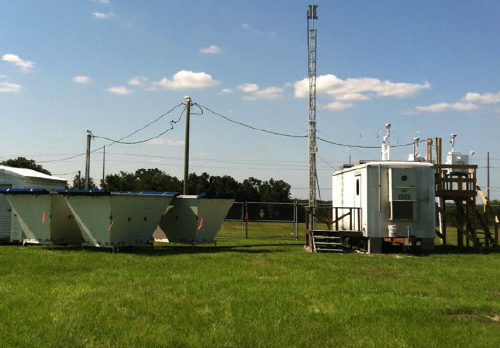HMT to study extreme precipitation in Southeastern U.S.
May 30, 2014
HMT received funding to improve observations and fundamental understanding of heavy precipitation in the southeastern U.S. With support from the 2013 Disaster Relief Appropriations Act (a.k.a. Sandy Supplemental), this project aims to address how extreme precipitation events in the Southeast can be...
- Better Observed – using a network of coastal atmospheric river observatories (AROs).
- Better Understood – by analyzing the historical record and applying modern forecasting techniques such as reforecasting.
- Better Integrated – so that relevant information on extreme precipitation events can be shared with stakeholders, both inside and outside of NOAA.
The first of three AROs was installed last week in Sydney, Florida, near Tampa Bay. Next week, a second ARO will be installed in coastal Mississippi. The third ARO will be installed later in June in Charleston, South Carolina. Providing better observations of landfalling tropical weather systems will help further understanding of these important phenomena. Data from the AROs will be transmitted back to a data hub in Boulder, Colorado, where image products are generated immediately and made available to weather forecasters and the general public.
The HMT and Sandy Supplemental project on extreme precipitation events are led by the NOAA Earth System Research Laboratory's Physical Sciences Division (PSD). In addition to PSD in Boulder, partners in these activities include NOAA National Weather Service's Weather Prediction Center, the Cooperative Institute for Research in Environmental Sciences, the Cooperative Institute for Marine Ecosystems and Climate, North Carolina State University, and Plymouth State University. The project will complement on going activities associated with the HMT-Southeast Pilot Study (HMT-SEPS).
Contact: Allen White
